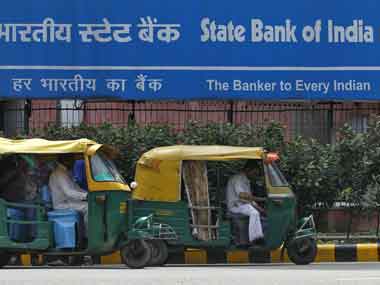State Bank of India (SBI)’s earnings report for third quarter (October-December), announced on Friday, is nothing short of a shocker for shareholders and banking analysts. Most predictions went horribly wrong. SBI reported a net loss of Rs 2,416 crore in the quarter. The gross non-performing assets (GNPAs) of the bank at 10.35 percent, are the highest in at least 17 years, according to a Firstpost data analysis. SBI is not alone in the NPA toppers club. Its public sector peers too have reported very high NPAs in the December quarter. Punjab National Bank has a GNPA figure of 12.11 percent, Bank of Baroda is at 11.31 percent and Canara Bank has 10.38 percent. The figures look even bad among the relatively smaller peers of SBI in the public sector banking industry. IDBI Bank tops the list with GNPAs of 24.72 percent, followed by UCO Bank which has 20.64 percent of its total loans gone bad. Total slippages of SBI rose to Rs 25,836 crore, compared with Rs 9,026 crore in the previous quarter. There are a few more state-run banks that are yet to announce their December quarter earnings. The final picture may be even worse. If one looks closer to SBI’s December quarter numbers, there are mainly three factors that have dragged down its net earnings. First, the NPA-shocker mentioned above. When loans are marked as bad, banks have to make provisions to cover such loans. This amount has substantially gone up for the bank in the December quarter with total provisions more than doubling to Rs 18,876 crore in the quarter compared with Rs 8,943 crore in the year-ago quarter. [caption id=“attachment_1316477” align=“alignleft” width=“380”]  Pic courtesy: Reuters[/caption] Secondly, the bank has had to earmark a good amount to provide for the mark-to-market losses on account of rising bond yields. This provision stood at about Rs 3,400 crore. Third, there was also a provision accounted for wage hike of employees. This chunk stood at around Rs 700 crore (read a report here). That explains how the earnings shocker happened. Remember, this was the first quarterly results for new SBI chairman Rajnish Kumar. It is typical for every new bank chairman to go for an all-out clean-up exercise of the loan book in the initial quarter and every outgoing chairman makes sure the provisioning exercise is postponed so that the earnings report look good when he or she vacates the corner office. Certainly, the SBI numbers thus have come as a disappointment for all stakeholders. But, it is not all bad here. In fact, informed investors of the bank should actually be happy about such large scale provisioning. It means that all the hidden rot in SBI’s loan book continues to come out – an exercise that started in January 2015 when the Reserve Bank of India began its asset quality review in early 2015. If what the SBI chairman indicated at the post-result presser offers any clue, this exercise is nearing its peak or past its peak now. This means, post the exercise, SBI will emerge with a healthier balance sheet. The question is how long before the clean-up process is over. For rest of the industry, particularly smaller banks, the pain may be far from over. Analysts caution that there may be still a large corporate NPA pile out there hidden in the banking system. It’s anybody’s guess what is the size of that. The above cited Mint report quotes India Ratings senior analyst Udit Kariwala who said that approximately Rs 2 lakh crore of corporate loans can turn NPAs in the next 12-18 months. If that happens, it is not good news for investors. To sum up, there is both good news and bad news in relation to the ongoing NPA clean-up exercise for investors. The waiting game is on. (Data support from Kishor Kadam)
There are a few more state-run banks that are yet to announce the December quarter earnings. The final picture could be even worse.
Advertisement
End of Article


)
)
)
)
)
)
)
)
)



